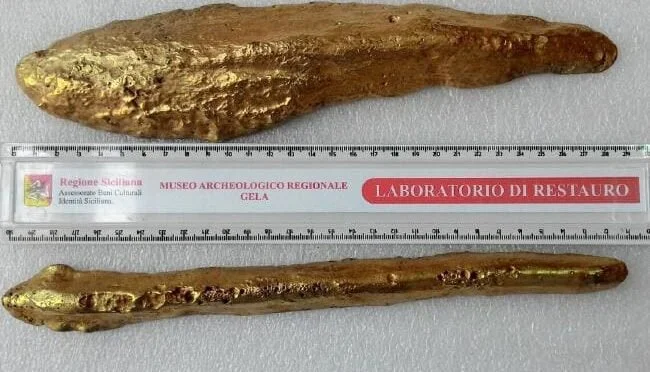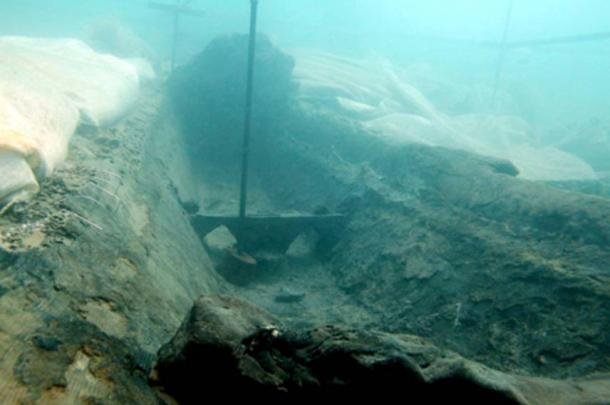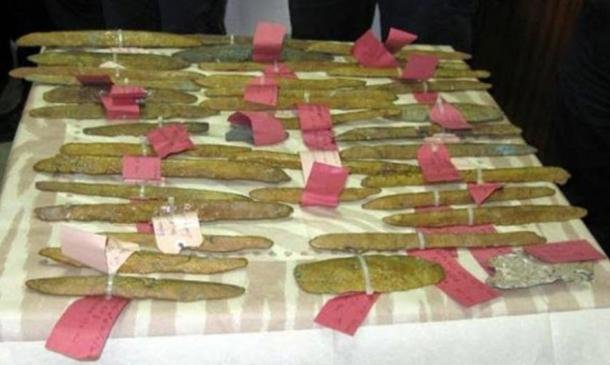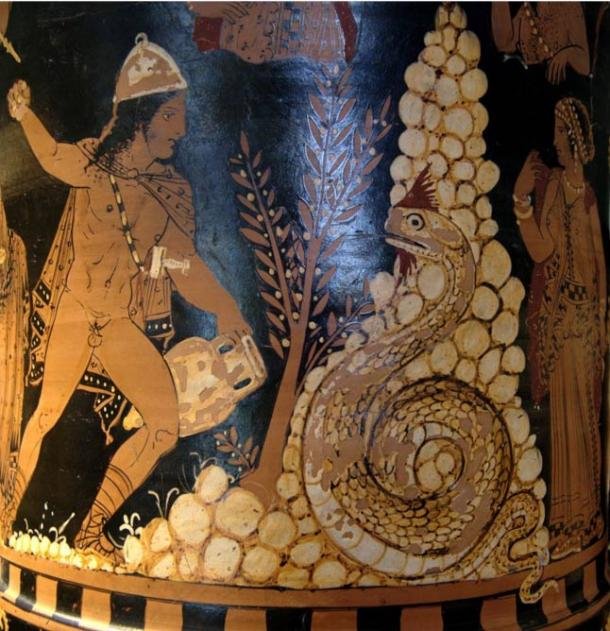The pharaohs fell, and the nomarchs rose to power. Could you believe this once happened in ancient Egypt? Yes, it did. This was a time when Egypt lost its once glorious state and was at the mercy of invaders. Slowly, a renowned empire was brought to its knees not just by foreign invaders but also by several years of economic crisis and drought, and this led Egypt into a terrifying dark age. How did such an unfortunate incident befall Egypt? What are the terrifying discoveries from the dark age of Egypt? These we shall unveil in the following video. Enjoy!
Who Wrote the Qur'an | What Sources Were Used?
Who actually wrote the Qur'an? And what sources were used? These and many more questions will be answered in the video below. Enjoy!
The incredible Creatures of Celtic Mythology and Folklore
In the following video we will analyze the incredible creatures of Celtic Mythology and Folklore. Enjoy!
From enslavement to rebel gladiator: The life of Spartacus
Spartacus was enslaved — one of millions taken from territories conquered by Rome to work the mines, till the fields or fight for a crowd’s entertainment. Imprisoned for deserting the Roman Army, he and other enslaved people fought their way free and started a rebellion. How did an enslaved man become synonymous with freedom and courage? Fiona Radford delves into the life and legend of Spartacus.
TERRIFYING Egyptian Secret Hidden From The Public
Egypt is a place where archeologists and geologists never get tired of exploring. The land of the great pyramid of Giza has many fascinating artifacts hidden under it. Archeologists are still unearthing those artifacts and even after many years they are still discovering mind-blowing things. However, do you know many of these discoveries are hidden from the public?
This video will reveal a terrifying Egyptian secret hidden from the public. It will uncover all the Egyptian discoveries that scare scientists and the government is not ready to talk about those discoveries. Stay tuned till the end because you will be amazed by Egyptian artifacts that tell about the enthralling culture of Egypt.
12,890-Years-Old! YOUNGER DRYAS Settlement of Tell Qaramel
When studying the ancient Pre-Pottery Neolithic sites of the Fertile Crescent, Göbekli Tepe, Karahan Tepe and Jericho get the most attention – for good reason – they display incredible architecture and are also truly ancient, between 10 and 12,000-years-old.
But there is one site that so many have never even heard of, one that is even older than those mentioned, and one that is even more important. It displays some truly magnificent examples of ancient stone architecture and artefacts, a Proto-Neolithic settlement with continuous occupation for 2,000 years, with origins before the Younger Dryas and then continuous occupation during and after - charting the evolution of the Pre-Pottery Neolithic in one specific location.
This site is Tell Qaramel, located in Northern Syria, around 25km north of Aleppo, 175km to the southwest of Göbekli Tepe. It’s on the western bank of the River Qoueiq, very much in the Fertile Crescent, a site with truly ancient origins, yet experts have still only excavated a tiny portion of this ancient site.
12 Most Incredible Archaeological Finds That Change History
The story of human history isn’t set in stone. Unless we’re talking about the history of the past one hundred years, nobody was there in person. We can’t rely on eyewitness testimony, and we can’t even rely on written records because of the possibility of bias. All we can do is piece together the evidence and try to make sense out of it. Sometimes a discovery is made that changes the established historical narrative - and that’s what this video is all about!
Archaeologists Discover 4400 Year Old Tomb in Egyptian Necropolis
When it comes to ancient Egypt, while a lot has been uncovered, there is still much more to be understood. It is why excavations around Egypt still continue to this day and probably will for a long time. Located some twenty miles south of Cairo, on the west bank of the Nile, where crop fields fed by the river give way to the desert, is the ancient site of Saqqara, which is distinguished by decrepit pyramids that protrude from the sand, like dragon's teeth. Archaeologists have been digging at the site of the Saqqara Necropolis for years, and in the process, they found something amazing. The degree to which the contents of this find are preserved is truly astonishing.
In today’s video, we will see what archaeologists discovered inside a 4400-year-old untouched tomb at Saqqara.
'Boss Mark' Found Deep Inside The Great Pyramid?
Has a boss mark been found within the Great Pyramid? Watch the video below to find out!
Orichalcum, the lost metal of Atlantis, may have been found on a shipwreck off Sicily
A group of naval archeologists has uncovered two hundred ingots spread over the sandy seafloor near a 2,600-year-old shipwreck off the coast of Sicily. The ingots were made from orichalcum, a rare cast metal that ancient Greek philosopher Plato wrote was from the legendary city of Atlantis.
A total of 39 ingots (metal set into rectangular blocks) were, according to Inquisitr, discovered near a shipwreck. BBC reported that another same metal cache was found. 47 more ingots were found, with a total of 86 metal pieces found to date.
The wreck was discovered in 1988, floating about 300 meters (1,000 ft) off the coast of Gela in Sicily in shallow waters. At the time of the shipwreck Gela was a rich city and had many factories that produced fine objects. Scientists believe that the pieces of orichalcum were destined for those laboratories when the ship sank.
Sebastiano Tusa, Sicily’s superintendent of the Sea Office, told Discovery News that the precious ingots were probably being brought to Sicily from Greece or Asia Minor.
Tusa said that the discovery of orichalcum ingots, long considered a mysterious metal, is significant as “nothing similar has ever been found.” He added, “We knew orichalcum from ancient texts and a few ornamental objects.”
According to a Daily Telegraph report, the ingots have been analyzed and found to be made of about 75-80 percent copper, 14-20 percent zinc and a scattering of nickel, lead, and iron.
The name orichalucum derives from the Greek word oreikhalkos, meaning literally “mountain copper” or “copper mountain”. According to Plato’s 5th century BC Critias dialogue, orichalucum was considered second only to gold in value, and was found and mined in many parts of the legendary Atlantis in ancient times
Plato wrote that the three outer walls of the Temple to Poseidon and Cleito on Atlantis were clad respectively with brass, tin, and the third, which encompassed the whole citadel, “flashed with the red light of orichalcum”.
The interior walls, pillars, and floors of the temple were completely covered in orichalcum, and the roof was variegated with gold, silver, and orichalcum. In the center of the temple stood a pillar of orichalcum, on which the laws of Poseidon and records of the first son princes of Poseidon were inscribed.
For centuries, experts have hotly debated the metal’s composition and origin.
According to the ancient Greeks, orichalcum was invented by Cadmus, a Greek-Phoenician mythological character. Cadmus was the founder and first king of Thebes, the acropolis of which was originally named Cadmeia in his honor.
Orichalcum has variously been held to be a gold-copper alloy, a copper-tin, or copper-zinc brass, or a metal no longer known. However, in Vergil’s Aeneid, it was mentioned that the breastplate of Turnus was “stiff with gold and white orachalc” and it has been theorized that it is an alloy of gold and silver, though it is not known for certain what orichalcum was.
Orichalcum is also mentioned in the ‘Antiquities of the Jews’ (1 st century AD) – Book VIII, sect. 88 by Josephus, who stated that the vessels in the Temple of Solomon were made of orichalcum (or a bronze that was like gold in beauty).
Today, some scholars suggest that orichalcum is a brass-like alloy, which was made in antiquity the process of cementation, which was achieved through the reaction of zinc ore, charcoal and copper metal in a crucible.
The latest discovery of the orichalcum ingots that had laid for nearly three millennia on the seafloor may finally unravel the mystery of the origin and composition of this enigmatic metal.
How The Human Face Might Look In 100,000 Years
According to reports, scientists have succeeded in creating the image of the future’s human face, and we now know what our species will probably look like in the near future.
But how much has our face changed since humans appeared on Earth?
Humankind’s ‘face’ has changed considerably in the last two million years. But this change hasn’t stopped. According to researchers, our face is still in the transformation process and will continue to evolve to better respond to new needs.
Scientists believe that while some facial functions will remain the same, others will have to adapt and evolve to new realities and conditions of the future.
Facial expressions changed and went from intimidating to being more harmonious to get along and to be able to live with others.
Moreover, in facial terms, the human face evolved into the most expressive species on Earth.
But the question that has bothered experts is what will be the face of the future? According to international experts, there are already some indications to solve the enigma.
One of the significant changes is directly associated with the brain’s size and related to its evolution, which allowed us to have more expressive possibilities because we are social, cooperative beings, and we need those characteristics.
However, as in the old dilemma of what came first; the egg or the chicken, it is unknown precisely if we are expressive because we have a brain that allows us to be it or our brain became better equipped because of our expressiveness.
Furthermore, the fact that the face is so familiar among humans, as anyone who sees a face knows its as a face, doesn’t mean that this is a characteristic that is prevalent in nature.
According to Penny Spikins, a palaeolithic archaeologist at the York University, “Our eyes are very close together and look forward, human dental arches are disproportionately small in relation to the rest of the body, and we have smaller teeth. That is, the physical characteristics of our face are unusual in nature,”
What you eat will shape your face, kind of…
David Perrett, a researcher at the University of Saint Andrews and author of the book “In Your Face: The New Science of Human Attraction,” explains that the diet is changing, which also affects the shape of the face.
Our faces have changed a lot from the common ancestor we shared with chimpanzees some 6 to 7 million years ago.
The main indicators include a reduced brow crest, flattened forehead, less pronounced muzzle, and chin.
Our oldest ancestors were the opposite of that description: pronounced forehead, prominent muzzle, and powerful chin.
“The basic form of the human face emerged about two million years ago, and the changes, since then, have accentuated the gradual reduction of factions,” says Erik Trinkaus, a professor at the Department of Anthropology at the University of Washington.
Young, forever?
If the human skull continues to evolve, scientists expect it to reach a juvenilization in terms of cranial proportions, which would lead to a smaller face, with proportionally larger eye orbits, a chin of smaller dimensions, and a more globular and developed cranial vault.
That would be expected if a process is known as “neoteny” occurs, which means that people would actually retain their juvenile appearance upon reaching adult age.
Smaller Face, bigger cranium, the face of the future?
In other words, the man of the future, argue experts, will most likely have a smaller face and bigger cranium compared to people today.
However, for this evolution to occur, scientists say that a change would be necessary for the female pelvis, whose birth canal is already extremely narrow, the reason why many babies are born premature, having to mature postnatally, which imposes some limitations.
Russia Reveals Antarctica Is Not What We Have Been Told
The south pole, known for being an icy wasteland has actually been a fascinating spot for scientists to make discoveries about our prehistoric past.
After drilling for two decades through more than two miles of Antarctic ice, Russian scientists discovered something in the vast, dark lake that hasn’t been touched by light for more than 20 million years. What they have discovered changes everything we’ve been told about Antartica.
What is this thing they discovered? Why wasn’t it discovered up until now? How does it change everything?
Join us as we dive deep into what Russian scientists revealed about the Antarctic that totally changes everything we thought we knew about the virtually uninhabited and ice-covered continent.
12 Most Mysterious Ancient Finds That Really Exist
We love an ancient mystery on this channel. We’re always looking for more mysterious finds from the past to share with you, and we’re never disappointed with what we find when we go looking! This is another video full of puzzles and enigmas, some of which are a few hundred years old and some of which are a few thousand. Let’s get started!
Crazy Discoveries Made By The Military
In today’s video we will explore some crazy discoveries made by the military. Enjoy!
This Drone Just Revealed That Something Big Has Been Found In The Middle Of The Ural Mountains
This drone just revealed that something big has been found in the middle of the Ural mountains. Today, we take a look at what has been found in the Ural mountains.
Each year we discover a variety of new discoveries, helping us to expand our knowledge. Sometimes these discoveries can be easy to explain, while other times they leave us asking questions. A few years back it was announced that a group of hikers allegedly discovered an unusual structure hidden in the Ural Mountains.
After hearing about the initial discovery, a team set out on a hike in order to explore the region further.
Secret Tomb Of Cleopatra Finally Found!
In the archives of world history, very few names are as recognizable as Cleopatra, the queen of ancient Egypt. Cleopatra VII was the last pharaoh of Egypt and was a member of the Ptolemaic dynasty. For centuries, archaeologists have searched for her tomb. But there were very few clues about the remains of this mighty ruler. But has that changed? Stay tuned with us till the end of the video to find out more!
The Oldest Artifacts
We will now explore some of the oldest artifacts. Watch the video below and enjoy!
Most Mysterious Archaeological Discoveries
In today’s video we will go through the most mysterious archaeological discoveries. Enjoy!
Archaeologists SHOCKED After Finding Pyramid of Menkaure
Although not the tallest, Menkaure's pyramid was once the most stunning. While many have attempted to discover its mysteries, some have been lost forever. Today in this video we'll examine it in detail as you learn the most shocking facts about Egypt's most remarkable monument, the Pyramid of Menkaure!
Bizarre & Mysterious Discoveries
In today’s video we will be exploring some more bizarre and mysterious discoveries. Enjoy!













